Correlation Research between Asymmetry Coefficient of Gondola Car Body and Stress Distribution of Cross Bearer Weld
Abstract
:1. Introduction
2. Theoretical Background
2.1. Definition of Asymmetry Coefficient
2.1.1. Asymmetry Coefficient of Independent Variable
2.1.2. Asymmetry Coefficient of Dependent Variable
2.2. Pearson Correlation Coefficient
2.3. Multiple Correlation Coefficient
3. Finite Element Analysis of 80t Gondola Car Body
3.1. The Structure of Car Body
3.2. Finite Element Model and Loading Method
3.3. Simulation Result Analysis
4. The Stress Distribution Analysis of Cross Bearer Welds
4.1. The Definition of the Stress Distribution Curves
4.2. Selection of Car Body Local Model
4.3. Study on Stress Distribution Clusters
- (1)
- On the whole, the stress distribution clusters reflect the three stiffness mutation points, which reflect the actual structural characteristics. Meanwhile, the closer to the side sill, the greater the stress dispersion. It is shown that the position of the side column mainly affects the stress distribution of the weld near the side sill.
- (2)
- According to Figure 8a, stress mutation points of welds 1 are mainly concentrated around 150 mm from the side sill. The reasons for this phenomenon are as follows:
- (a)
- The centers of side column, interior reinforcement and cross bearer are not consistent.
- (b)
- The interior reinforcement is made of cast steel, the rigidity of the connection among the interior reinforcement, cross bearer and the floor is abruptly changed, and the distance between the outer edge of the reinforcement and the side sill is 149 mm.
- (c)
- The weld 1 is close to the center of the car body, and the side wall has a large free area at the position of the side opening door, which causes greater stress mutation.
- (3)
- According to Figure 8b, compared with the stress distribution cluster of weld 1, the stress of weld 2 is high between 400 mm and 850 mm, and it is relatively small at 153 mm. Compared with weld 1, there are two main reasons for this phenomenon: the center difference of side column, interior reinforcement and cross bearer is small; the weld 2 is far away from the center of the car body.
4.4. Stress Extraction
4.5. Stress Analysis at Intersection Point
- (1)
- The maximum stress of weld 1 is 105.90 MPa, the minimum is only 7.85 MPa, and the difference is about 98 MPa; the maximum stress of weld 2 is 52.92 MPa, the minimum is 19.49 MPa, and the difference is about 33 MPa. It can be seen that the minimum stresses of welds appear when the interior reinforcement, side column, and cross bearer are completely symmetrical, which shows that the structural symmetry has a great influence on the stress.
- (2)
- In order to further study the distribution law of weld 1 at the intersection point, according to the data of weld 1 in Table 3, taking d1 as the x axis, d2 as the y axis, and the stress as the z axis, drawing a three-dimensional diagram of the stress distribution of equal height, which is shown in Figure 9a. It can be seen that d1 has a greater influence on the stress, and d2 has a smaller influence on the stress. Therefore, d2 can be used as the horizontal axis, and the stress value can be used as the vertical axis, to draw Figure 9b.
5. Study on the Correlation between Cross Bearer Welds and Stress
5.1. Asymmetry Coefficient Calculation
5.2. Correlation Analysis Based on Pearson Correlation Coefficient
- (1)
- On the whole, the stress of the weld 1 has a better correlation with the positions of the two side columns. Meanwhile, according to the stress distribution cluster of weld 1, weld 1 has a pulsed stress mutation at the interior reinforcement, which leads to a greatly reduced fatigue life of the weld 1 at this location. Therefore, when designing the car body structure, we must pay attention to the placement of the two side columns.
- (2)
- According to the data in Table 5, when the side column 2 is at different positions, the position of the side column 1 shows good correlation with the stresses of two welds. Most of the correlation coefficients are greater than 0.8, which is highly correlated.
- (3)
- According to the data in Table 6, when the side column 1 is at different positions, the position of the side column 2 shows excellent correlation with the stresses of two weld 1, the correlation coefficient is basically above 0.9, which is highly correlated. However, the correlation between the position of the side column 2 and the stress of the weld 2 is slightly worse.
5.3. Correlation Analysis Based on Multiple Correlation Coefficient
6. Conclusions
- (a)
- In this paper, two concepts and one calculation method are proposed. The two concepts are asymmetric coefficient and stress distribution cluster. The one calculation method is the asymmetric coefficient calculation method. When the parameters are monotonically increasing or monotonically decreasing on the coordinate axis, asymmetry coefficient of independent variable has been given; when the parameters are in two-dimensional space, asymmetry coefficient of dependent variable is been systematically given.
- (b)
- 30 local models of vehicle body are established through the adjustment of the positions of side column 1 and side column 2. According to the finite element analysis results, the stress distribution clusters of weld 1 and weld 2 are formed, respectively. It can be clearly seen that the adjustment of the position of side column 1 and side column 2 has little effect on the position of the maximum stress point of the weld. The maximum stress basically occurs in three positions: interior reinforcement, partition1 and partition 2.
- (c)
- The correlations between the asymmetry coefficient of weld stress and the asymmetry coefficient of side column position are analyzed by the Pearson correlation coefficient and complex correlation coefficient, respectively. It can be seen from the analysis results that the stress of weld 1 is highly correlated with the position of two side columns 1 and 2, and that the stress of inner reinforcement seat node of weld 2 is moderately correlated with the position of side column 1 and side column 2.
- (d)
- This study can not only provide an important basis for the structural optimization of 80t gondola car body, but it also provides an effective analytical method for asymmetric structure design and optimization.
Author Contributions
Funding
Data Availability Statement
Conflicts of Interest
References
- Liu, W.F. Research on Fatigue Strength Evaluation and Structure Optimization of Heavy Haul General Purpose Gondola Car Body. Ph.D. Thesis, Beijing Jiaotong University, Beijing, China, 2019. [Google Scholar]
- Maurizio, G. Beams with an intermediate pier: Spectral properties, asymmetry and stability. Math. Eng. 2021, 3, 1–21. [Google Scholar]
- Wu, Z.H.; Sun, B.G.; Lou, W.J. Dynamic analysis of an asymmetry double-tower connecting building. J. Zhejiang Univ. (Eng. Sci.) 2003, 37, 560–565. [Google Scholar]
- Karayannis, C.G.; Naoum, M.C. Torsional behavior of multistory RC frame structures due to asymmetric seismic interaction. Eng. Struct. 2018, 163, 93–111. [Google Scholar] [CrossRef]
- Zaitseva, J.; Oswald, C.; Jumpertz, T.; Jenewein, S.; Wiedenmann, A.; Holland, I.B.; Schmitt, L. A structural analysis of asymmetry required for catalytic activity of an ABC-ATPase domain dimer. EMBO J. 2006, 25, 3432–3443. [Google Scholar] [CrossRef] [PubMed]
- Xie, H.; Liu, F.; Tang, H.Y.; Liu, X. Numerical study on the dynamic response of a truncated ship-hull structure under asymmetrical slamming. Mar. Struct. 2020, 72, 102767. [Google Scholar] [CrossRef]
- Li, Z.; Dou, H.S.; Lin, P.; Wei, Y.; Chen, Y.; Lin, L.; Ye, X. Design for a squirrel cage fan with double arc blade. J. Appl. Fluid Mech. 2020, 13, 881–891. [Google Scholar] [CrossRef]
- Li, T.T. Research on Asymmetric Body Understructure of Integral Bus. Master’s Thesis, Jilin University, Jilin, China, 2015. [Google Scholar]
- Wei, Z.; Cai, C.S.; Fang, P. Finite element modeling of bridges with equivalent orthotropic material method for multi-scale dynamic loads. Eng. Struct. 2013, 54, 82–93. [Google Scholar]
- Pustovoytov, D.; Pesin, A.; Biryukova, O. Finite element analysis of strain gradients in aluminium alloy sheets processed by asymmetric rolling. Procedia Manuf. 2018, 15, 129–136. [Google Scholar] [CrossRef]
- Chakraborty, A.; Mahapatra, D.R.; Gopalakrishnan, S. Finite element analysis of free vibration and wave propagation in asymmetric composite beams with structural discontinuities. Compos. Struct. 2002, 55, 23–36. [Google Scholar] [CrossRef]
- Zolochevsky, A.; Martynenko, A.; Kuehhorn, A. Structural benchmark creep and creep damage testing for finite element analysis with material tension-compression asymmetry and symmetry. Comput. Struct. 2012, 100, 27–38. [Google Scholar] [CrossRef]
- Suryawanshi, J.; Singh, G.; Msolli, S.; Jhon, M.H.; Ramamurty, U. Tension-compression asymmetry and shear strength of titanium alloys. Acta Mater. 2021, 221, 117392. [Google Scholar] [CrossRef]
- Erdem, O.; Ceyhan, E.; Varli, Y. A new correlation for bivariate time-series data. Phys. A 2014, 414, 274–284. [Google Scholar] [CrossRef]
- Mu, Y.S.; Liu, X.D.; Wang, L.D. A Pearson’s correlation coefficient based decision tree and its parallel imple-mentation. Inf. Sci. 2018, 435, 40–58. [Google Scholar] [CrossRef]
- Wu, R.L.; Wang, J.Z.; Yuan, K.H. Monte carb simulation of polychoric correlation and pearson correlation coefficient. J. Beijing Univ. Aeronaut. Astronaut. 2009, 35, 1507–1515. [Google Scholar]
- Jaeho, S.; Sungchul, Y. A new approach to machine learning model development for prediction of concrete fatigue life under uniaxial compression. Appl. Sci. 2022, 12, 9766. [Google Scholar]
- Liu, W.F.; Zhang, Y.J.; Li, N.; Wang, L. Research on stress intensity factor and fatigue crack propagation rate of the general-purpose gondola car body. Trans. Can. Soc. Mech. Eng. 2021, 45, 297–307. [Google Scholar] [CrossRef]
- Yang, G.X.; Li, S.; Fu, D. Fatigue properties of AL/AL-MG alloy laminated materials for the applications to railway tank cars. Int. J. Fatigue 2019, 122, 173–183. [Google Scholar] [CrossRef]
- Zhao, F.W. Study on Load Spectrum Test and Fatigue Strength Evaluation of Railway Freight Car Body. Ph.D. Thesis, Beijing Jiaotong University, Beijing, China, 2015. [Google Scholar]
- Liu, W.F.; Liu, Z.M.; Lin, L.; Xue, L. Study on the correlation between local asymmetric structure of C80E body and stress distribution of critical weld. J. Beijing Jiaotong Univ. 2018, 42, 83–90. [Google Scholar]
- Tang, J.Y.; He, P.; Chen, C.S. Reliability Analysis Method for Mechanical Systems Involving Failure Correlations; National Defense Industry Press: Beijing, China, 2014. [Google Scholar]
- Najarzadeh, D. A simple test for zero multiple correlation coefficient in high-dimensional normal data using random projection. Comput. Stat. Data Anal. 2020, 148, 106955. [Google Scholar] [CrossRef]
- Liu, W.F.; Zhang, Y.J.; Liu, Q.T.; Zhang, B.; Fu, Q. Structural optimization of the heavy haul wagon body based on MPSO-BP algorithm. Trans. Can. Soc. Mech. Eng. 2021, 45, 461–472. [Google Scholar] [CrossRef]
- TB/T1335; Code for Strength Design and Test Appraisal of Railway Vehicles. Chinese Standard: Beijing, China, 1996.
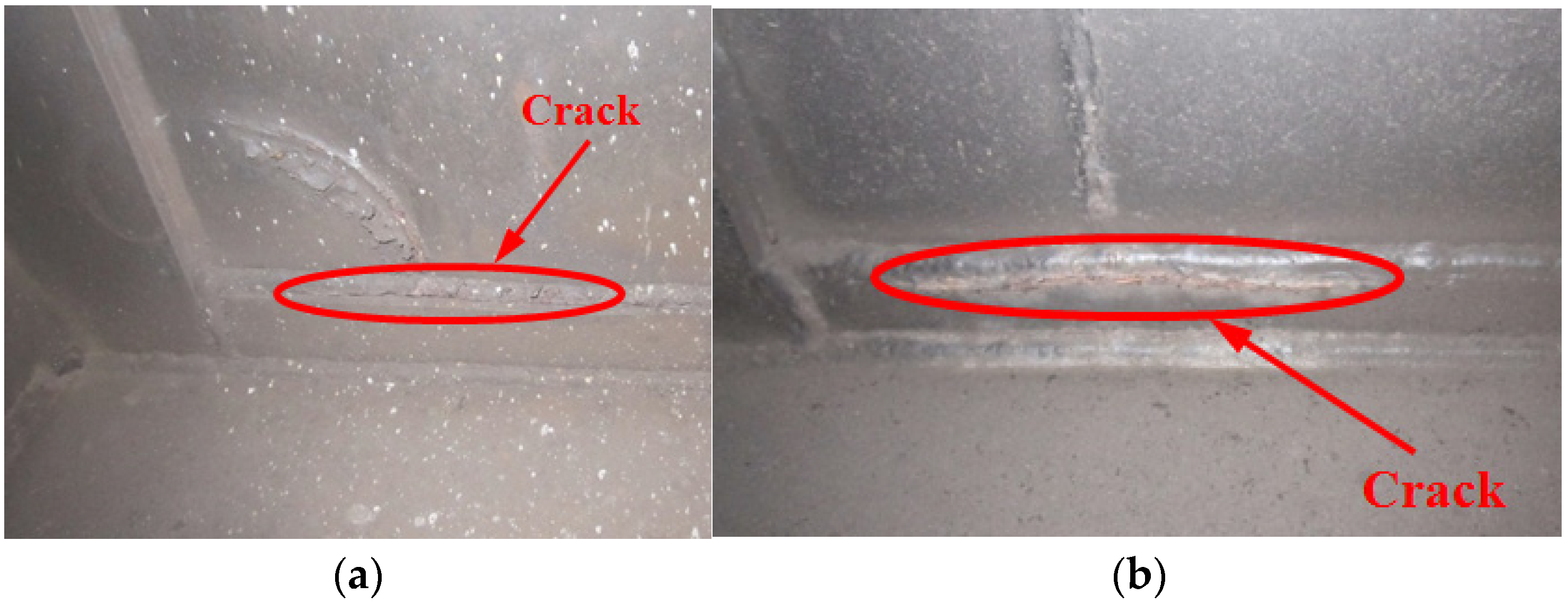
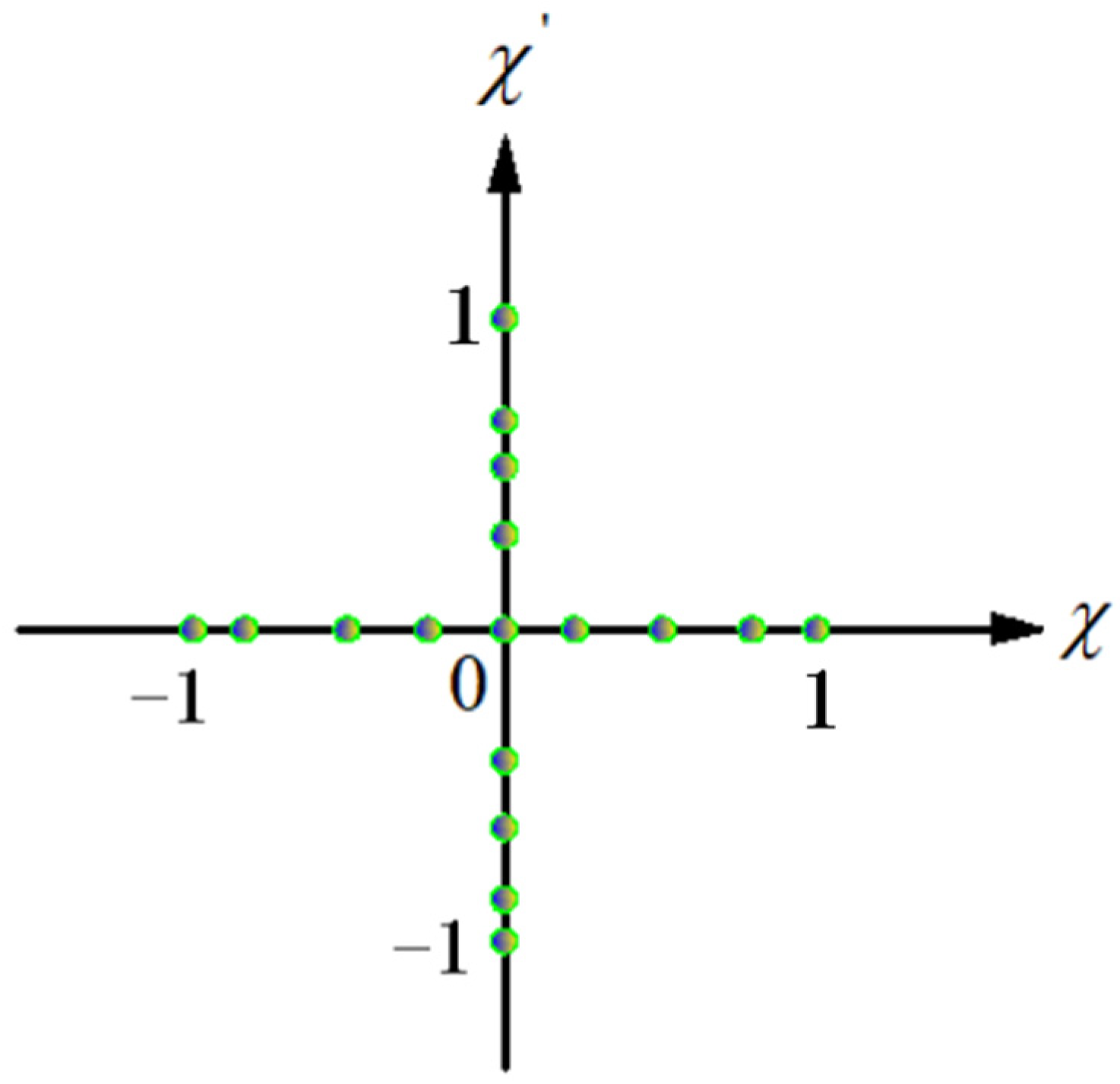
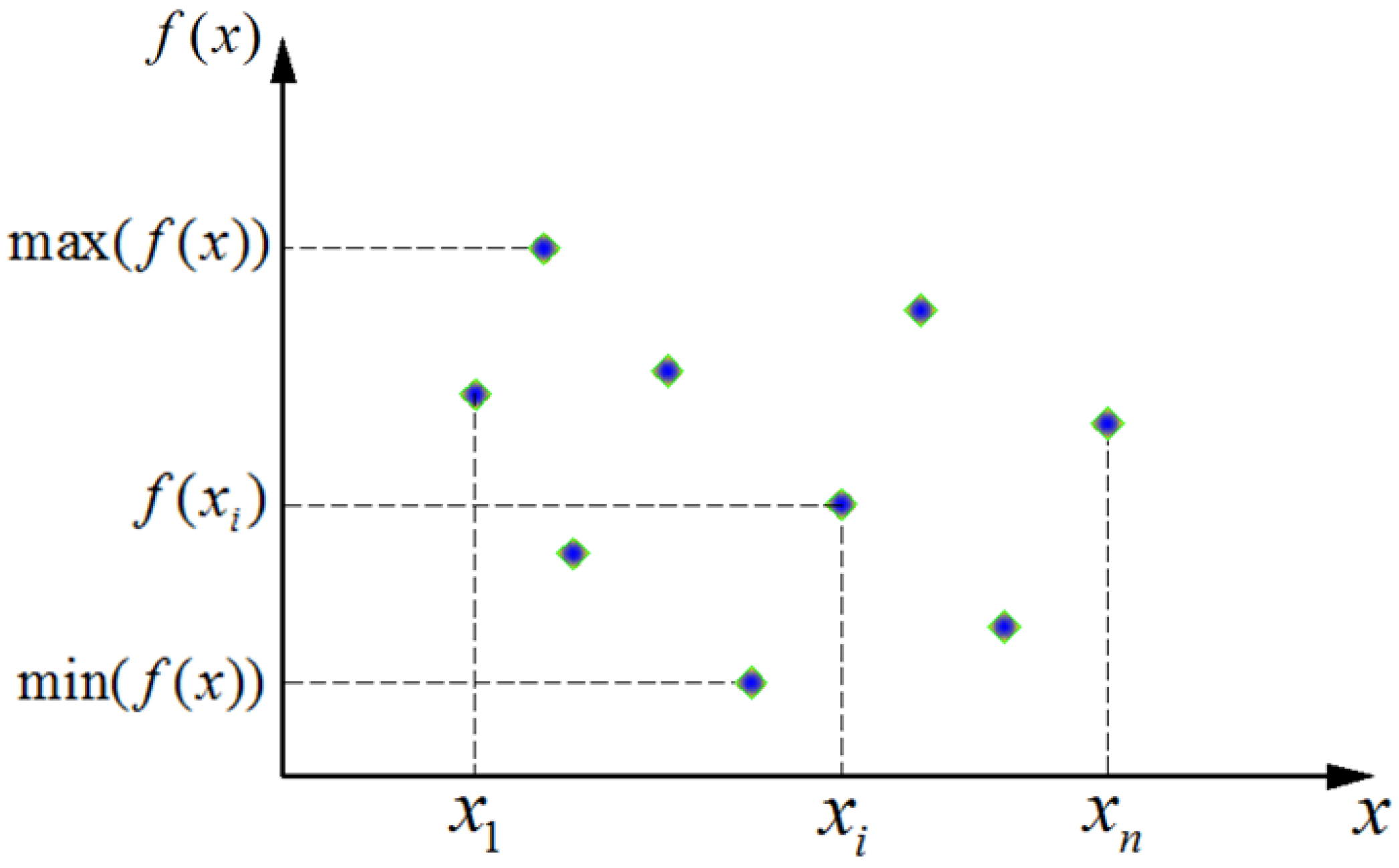
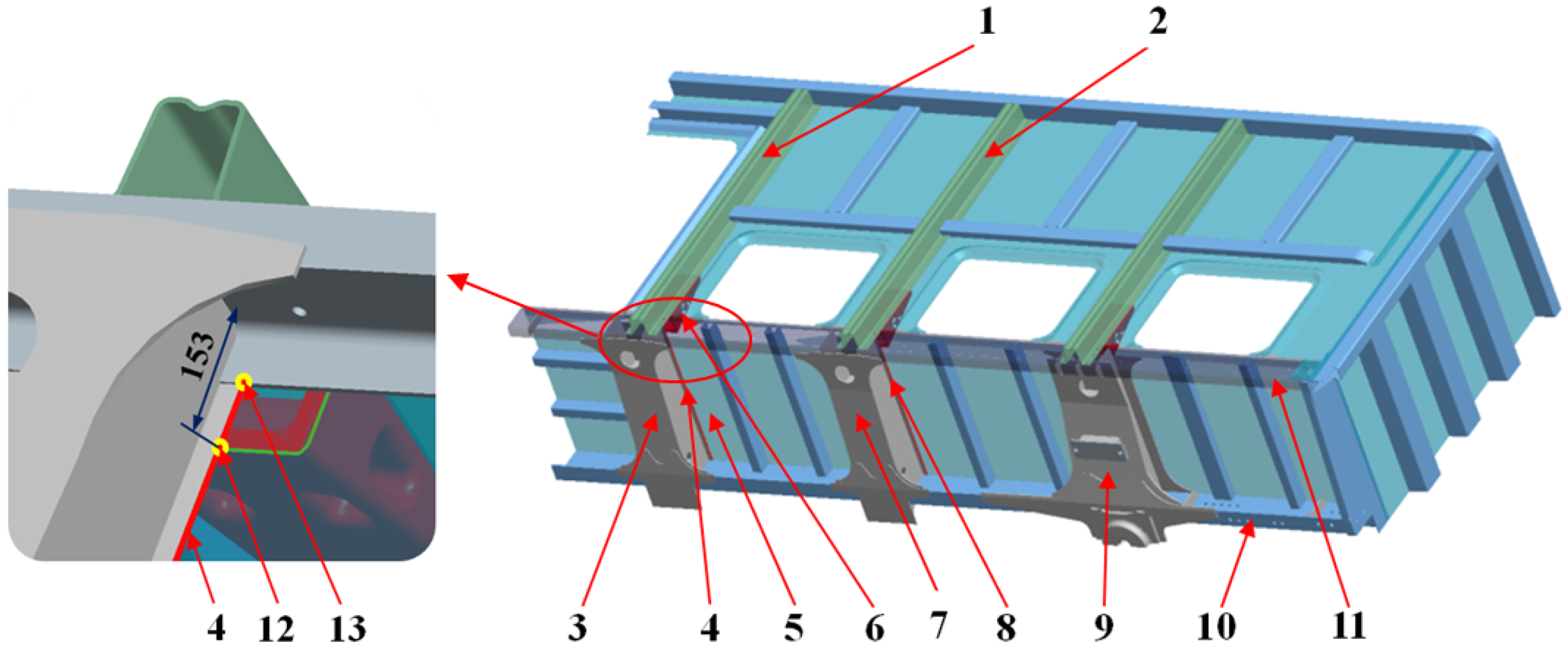
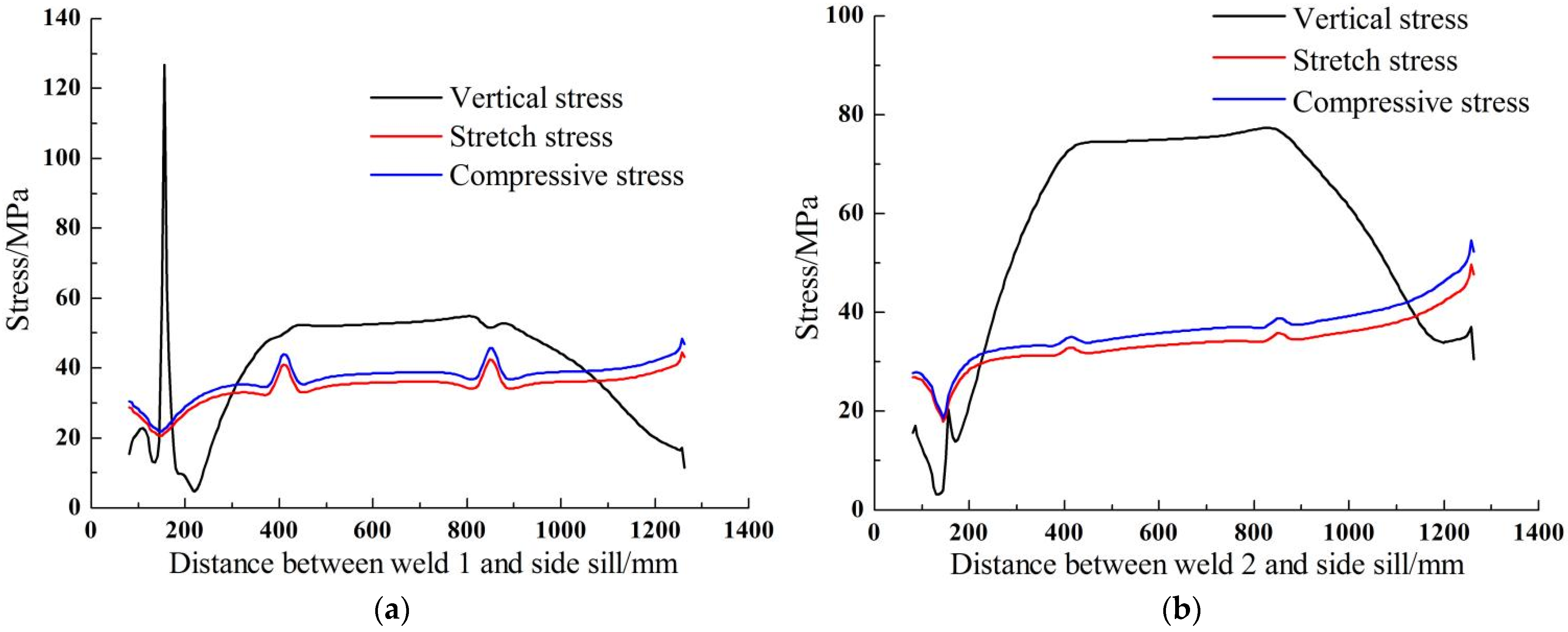
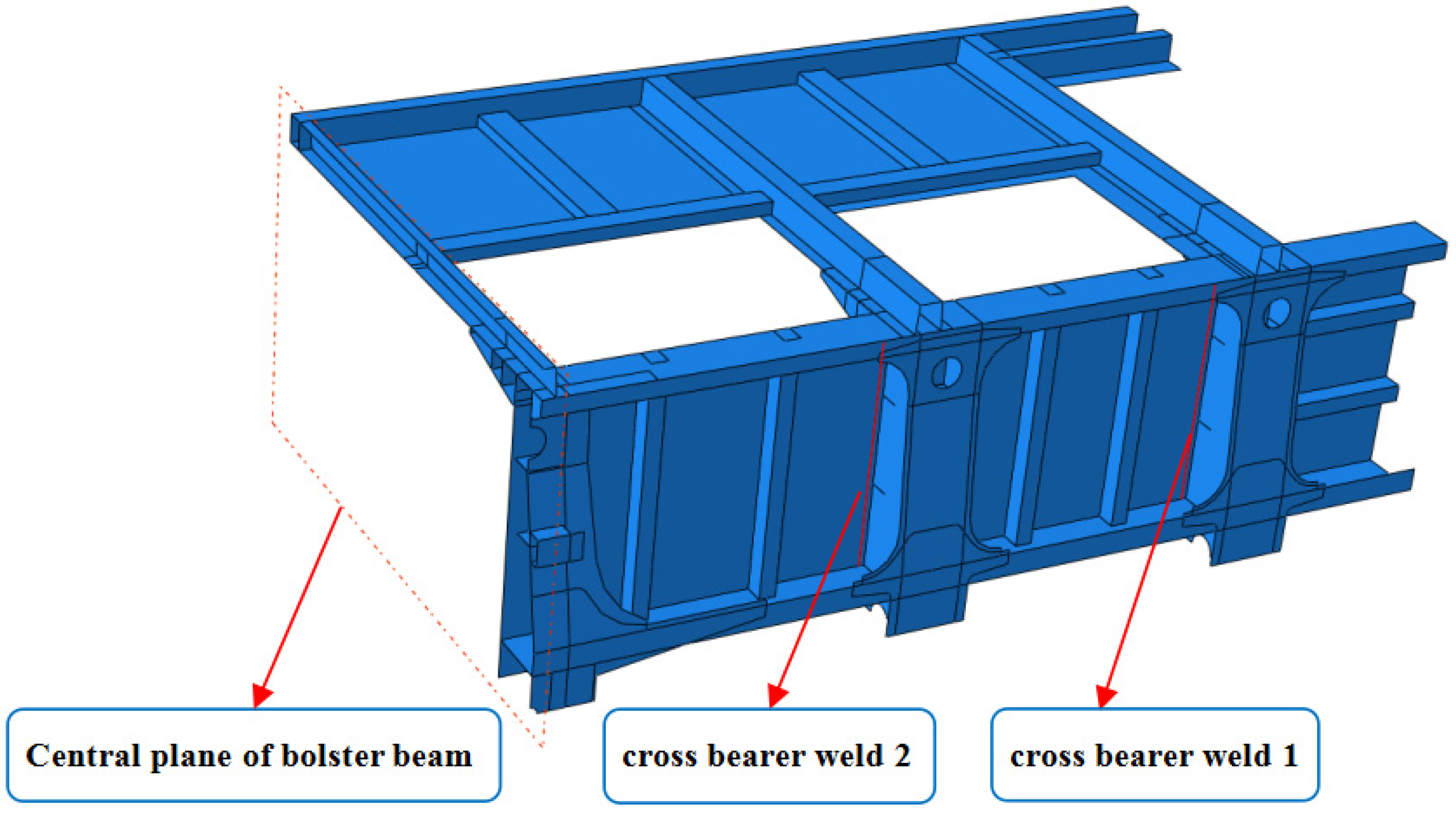
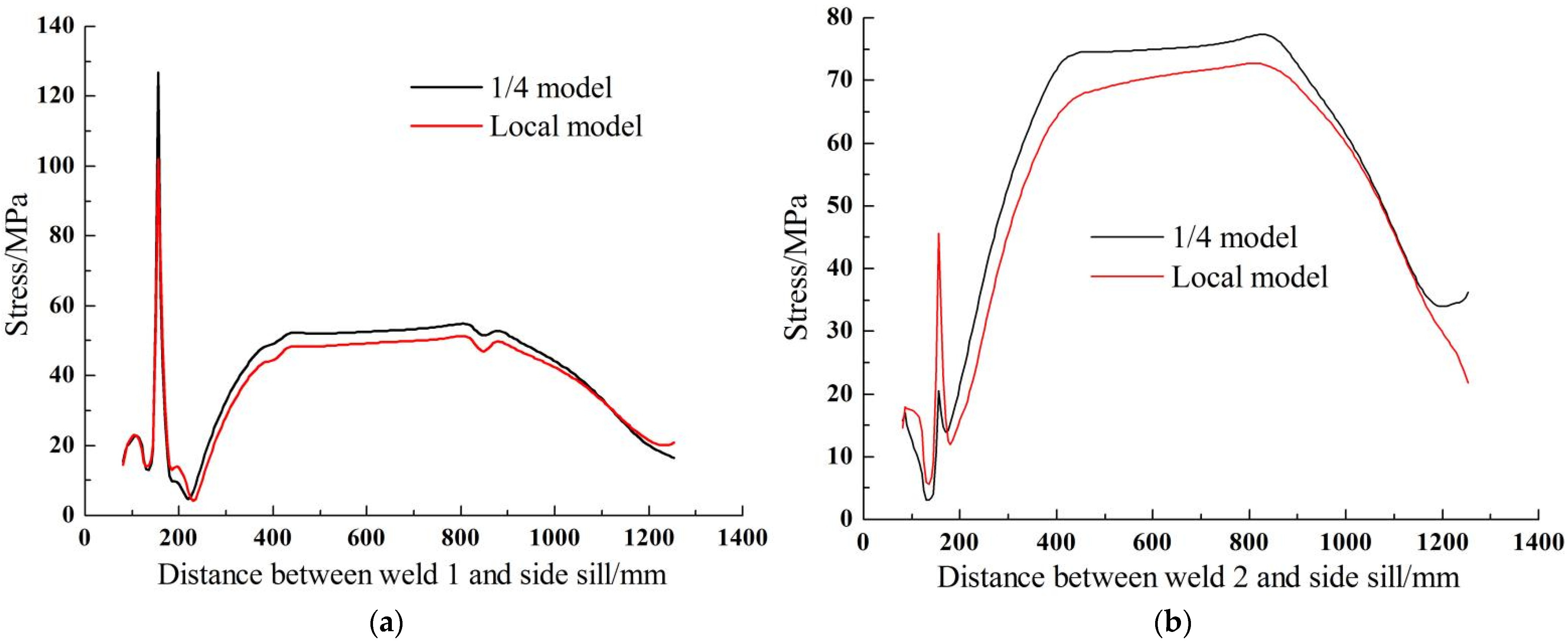
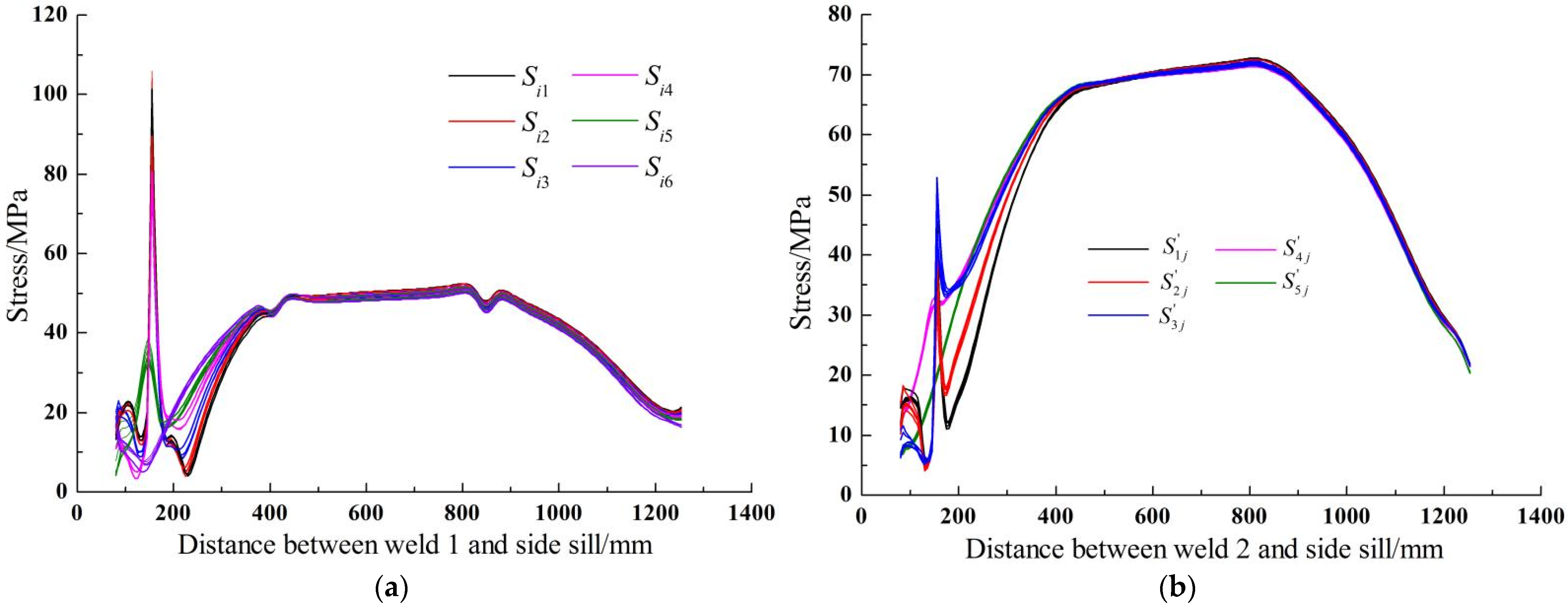
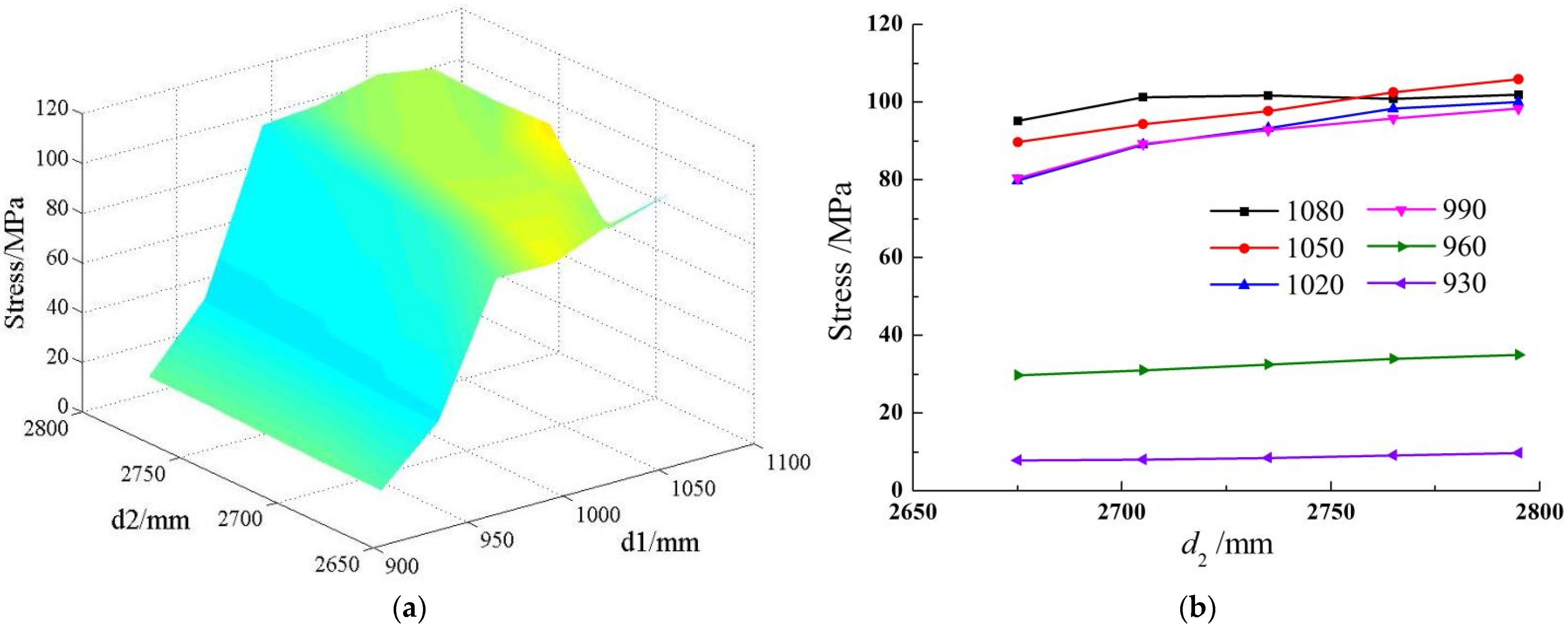
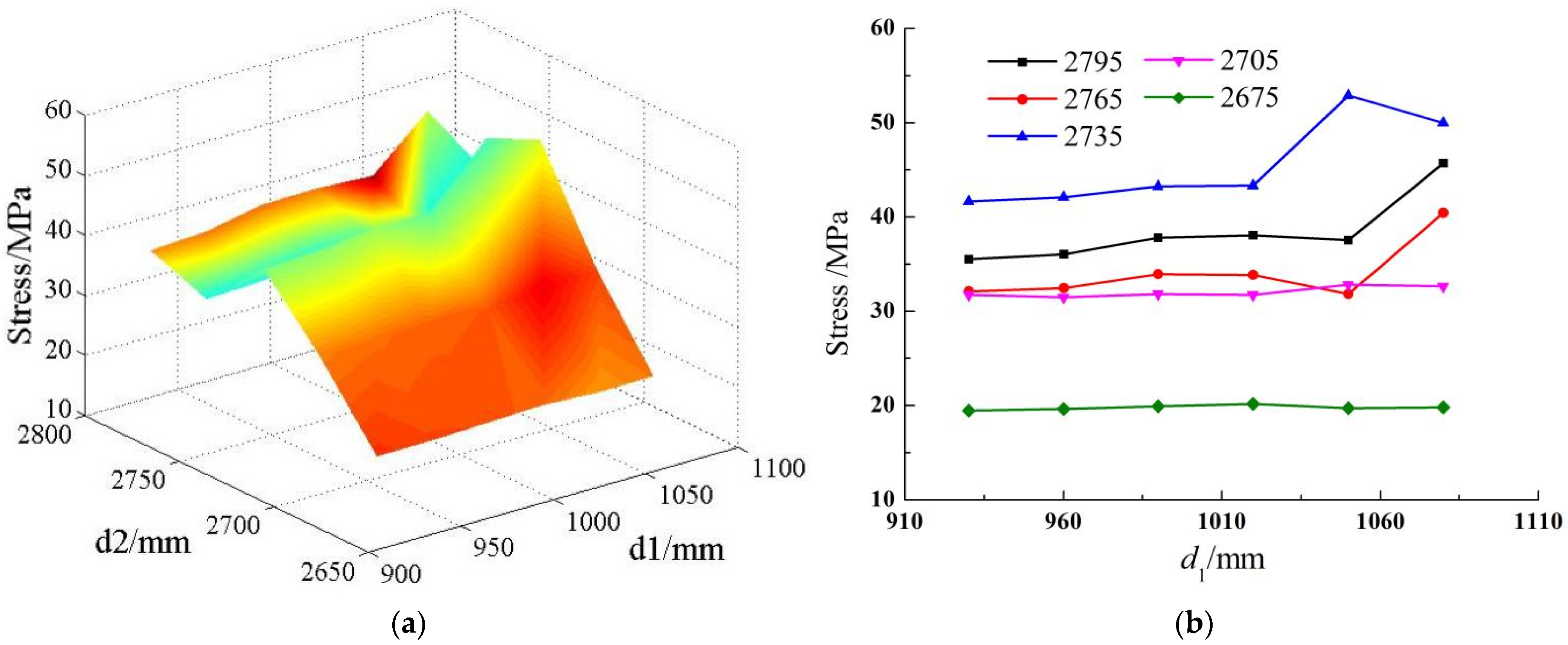
| Serial Number | Correlation Coefficient | Correlation Degree |
|---|---|---|
| 1 | High correlation | |
| 2 | Moderate correlation | |
| 3 | Low correlation | |
| 4 | No correlation |
| d2 (mm) | d1 (mm) | |||||
|---|---|---|---|---|---|---|
| 1080 | 1050 | 1020 | 990 | 960 | 930 | |
| 2795 | S11 | S12 | S13 | S14 | S15 | S16 |
| 2765 | S21 | S22 | S23 | S24 | S25 | S26 |
| 2735 | S31 | S32 | S33 | S34 | S35 | S36 |
| 2705 | S41 | S42 | S43 | S44 | S45 | S46 |
| 2675 | S51 | S52 | S53 | S54 | S55 | S56 |
| Name | d2 (mm) | d1 (mm) | |||||
|---|---|---|---|---|---|---|---|
| 1080 | 1050 | 1020 | 990 | 960 | 930 | ||
| Weld 1 | 2795 | 101.91 | 105.90 | 100.06 | 98.28 | 35.00 | 9.76 |
| 2765 | 100.90 | 102.47 | 98.22 | 95.73 | 33.84 | 9.13 | |
| 2735 | 101.73 | 97.76 | 93.32 | 92.90 | 32.50 | 8.51 | |
| 2705 | 101.3 | 94.28 | 89.09 | 89.21 | 30.90 | 7.93 | |
| 2675 | 95.06 | 89.66 | 79.78 | 80.52 | 29.74 | 7.85 | |
| Weld 2 | 2795 | 45.67 | 37.57 | 38.04 | 37.82 | 36.09 | 35.52 |
| 2765 | 40.45 | 31.86 | 33.85 | 33.93 | 32.48 | 32.12 | |
| 2735 | 49.97 | 52.92 | 43.32 | 43.23 | 42.11 | 41.69 | |
| 2705 | 32.67 | 32.79 | 31.75 | 31.88 | 31.53 | 31.73 | |
| 2675 | 19.83 | 19.77 | 20.21 | 19.91 | 19.69 | 19.49 | |
| χ11 | χ12 | χ13 | χ14 | χ15 | χ16 | |
|---|---|---|---|---|---|---|
| χ21 | γ11 | γ12 | γ13 | γ14 | γ15 | γ16 |
| χ22 | γ21 | γ22 | γ23 | γ24 | γ25 | γ26 |
| χ23 | γ31 | γ32 | γ33 | γ34 | γ35 | γ36 |
| χ24 | γ41 | γ42 | γ43 | γ44 | γ45 | γ46 |
| χ25 | γ51 | γ52 | γ53 | γ54 | γ55 | γ56 |
| Name | χ2 | χ1 | Pearson Correlation Coefficient | |||||
|---|---|---|---|---|---|---|---|---|
| 1.00 | 0.80 | 060 | 0.40 | 0.20 | 0.00 | |||
| weld 1 | 1.00 | 0.92 | 1.00 | 0.88 | 0.84 | −0.47 | −1.00 | 0.87 |
| 0.75 | 0.97 | 1.00 | 0.91 | 0.86 | −0.47 | −1.00 | 0.87 | |
| 0.50 | 1.00 | 0.91 | 0.82 | 0.81 | −0.49 | −1.00 | 0.88 | |
| 0.25 | 1.00 | 0.85 | 0.74 | 0.74 | −0.51 | −1.00 | 0.90 | |
| 0.00 | 1.00 | 0.88 | 0.65 | 0.67 | −0.50 | −1.00 | 0.91 | |
| weld 2 | 1.00 | 1.00 | −0.60 | −0.50 | −0.55 | −0.89 | −1.00 | 0.81 |
| 0.75 | 1.00 | −1.00 | −0.54 | −0.52 | −0.86 | −0.94 | 0.66 | |
| 0.50 | 0.45 | 1.00 | −0.78 | −0.79 | −1.00 | −1.08 | 0.84 | |
| 0.25 | 0.81 | 1.00 | −0.65 | −0.44 | −1.00 | −0.68 | 0.84 | |
| 0.00 | −0.06 | −0.22 | 1.00 | 0.17 | −0.44 | −1.00 | 0.50 |
| Name | χ1 | |||||||||||
|---|---|---|---|---|---|---|---|---|---|---|---|---|
| Weld 1 | Weld 2 | |||||||||||
| χ2 | 1.00 | 0.80 | 060 | 0.40 | 0.20 | 0.00 | 1.00 | 0.80 | 060 | 0.40 | 0.20 | 0.00 |
| 1.00 | 1.00 | 1.00 | 1.00 | 1.00 | 1.00 | 1.00 | 0.71 | 0.07 | 0.54 | 0.54 | 0.46 | 0.44 |
| 0.75 | 0.71 | 0.58 | 0.82 | 0.71 | 0.56 | 0.34 | 0.37 | −0.27 | 0.18 | 0.20 | 0.14 | 0.14 |
| 0.50 | 0.95 | 0.00 | 0.34 | 0.39 | 0.05 | −0.31 | 1.00 | 1.00 | 1.00 | 1.00 | 1.00 | 1.00 |
| 0.25 | 0.82 | −0.43 | −0.08 | −0.02 | −0.56 | −0.92 | −0.15 | −0.21 | 0.00 | 0.03 | 0.06 | 0.10 |
| 0.00 | −1.00 | −1.00 | −1.00 | −1.00 | −1.00 | −1.00 | −1.00 | −1.00 | −1.00 | −1.00 | −1.00 | −1.00 |
| Pearson correlation coefficient | 0.73 | 1.00 | 0.97 | 0.96 | 1.00 | 0.98 | 0.79 | 0.46 | 0.69 | 0.69 | 0.65 | 0.63 |
Disclaimer/Publisher’s Note: The statements, opinions and data contained in all publications are solely those of the individual author(s) and contributor(s) and not of MDPI and/or the editor(s). MDPI and/or the editor(s) disclaim responsibility for any injury to people or property resulting from any ideas, methods, instructions or products referred to in the content. |
© 2022 by the authors. Licensee MDPI, Basel, Switzerland. This article is an open access article distributed under the terms and conditions of the Creative Commons Attribution (CC BY) license (https://creativecommons.org/licenses/by/4.0/).
Share and Cite
Liu, W.; Zhang, L.; Bi, C.; Gao, Z.; Pu, X. Correlation Research between Asymmetry Coefficient of Gondola Car Body and Stress Distribution of Cross Bearer Weld. Processes 2023, 11, 98. https://doi.org/10.3390/pr11010098
Liu W, Zhang L, Bi C, Gao Z, Pu X. Correlation Research between Asymmetry Coefficient of Gondola Car Body and Stress Distribution of Cross Bearer Weld. Processes. 2023; 11(1):98. https://doi.org/10.3390/pr11010098
Chicago/Turabian StyleLiu, Wenfei, Li Zhang, Chen Bi, Zhixiong Gao, and Xiongtao Pu. 2023. "Correlation Research between Asymmetry Coefficient of Gondola Car Body and Stress Distribution of Cross Bearer Weld" Processes 11, no. 1: 98. https://doi.org/10.3390/pr11010098
APA StyleLiu, W., Zhang, L., Bi, C., Gao, Z., & Pu, X. (2023). Correlation Research between Asymmetry Coefficient of Gondola Car Body and Stress Distribution of Cross Bearer Weld. Processes, 11(1), 98. https://doi.org/10.3390/pr11010098







